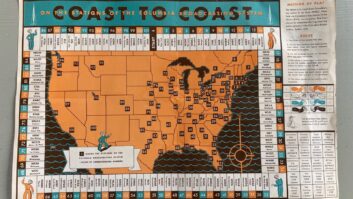The Radio Advertising Bureau has embraced Ad-ID, a commercial identification architecture that is supported and authorized by the American Association of Advertising Agencies (the “4As”) and the Association of National Advertisers.
Ad-ID is a Web-based system that generates a unique identifying code for each ad, creating a capability to identify them across various media. It was introduced in 2003. The 4As and the ANA say more than 700 advertisers use Ad-ID and 100 of those use it for radio spots. The proponents say Ad-ID improves workflow between agency, advertiser, distributor and media.
Supporters now say a new radio initiative will focus on accountability and distribution platforms to make sure the right commercials get on the correct stations without burdening existing station staff. For this initiative, Ad-ID becomes the foundation of digital workflow.
RAB wants radio stations to use it and has assembled a cadre of interested companies to tweak it for radio, hoping to create an enhanced system of entering, tracking, tagging and monitoring commercials so advertisers can track spots more closely.
The founding participants in the radio initiative announced last week include Jump2Go; ClearStreaming Inc.; FirstSpin Inc.; and PowerLink Software.
Jump2Go will create and manage the RDS infrastructure.
FirstSpin Power-Link software will be used to monitor ads that play; it says the integration of its radio distribution platform with the Ad-ID central database of ad information reduces a rekeying step.
FirstSpin plans to use XMP to embed the Ad-ID in its file, to further automate station commercial operations. Adobe’s Extensible Metadata Platform (XMP) is a labeling technology that allows the user to embed data about a file into the file itself. The proponents, who have approached Adobe about joining the initiative, say using XMP would improve capturing and sharing metadata.
Power-Link’s “Proof of Play” software can monitor ads before, during and after airplay via the Web. The company says its integration with Ad-ID enables it to use standardized data to aggregate across stations and markets in real time.
Not only is the RAB hoping that stations use the system, it’s especially seeking those with RDS encoders.
Jump2Go’s Allen Hartle, a longtime advocate of RDS-based services in radio broadcasting, is excited about the accountability initiative. Someday, he hopes that, via this system, consumers would be able to use radios and other devices equipped with RDS tagging to interact with commercials.
To make that work, stations will have to encode spots (just as they must encode songs, for tagging and purchasing to work). So expect the proponents to reach out to stations to push for that encoding.
Allen says that using RDS, Jump2Go can make radio ads interactive. Jump2Go will use Ad-ID to manage the identification of the ad and maintain a database of text associated with the Ad-ID based on the available output devices.
It’s early days for this initiative, but we may see RDS tagging for commercials. If stations that have RDS encoders buy into the concept, in the future, customized text messages would appear as commercials play, and a unique ID is embedded in the RDS tagging technology. Devices would be able to respond to a commercial whether it’s a URL, a coupon or another call to action, Allen tells me.










